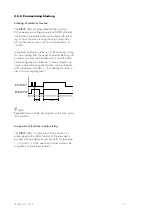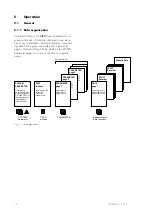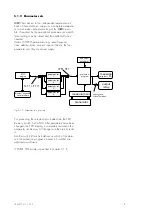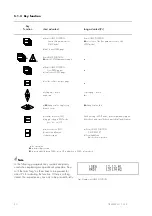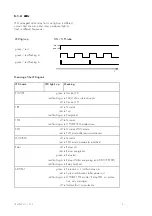
6
TB MRD1-G 11.01 E
3.2
Master module
The master module is fitted right in the middle and con-
tains componentries for data processing, the main
processor and the following connections:
3.2.1
Interface RS485
Interface RS485 at the rear of the relay is a permanent
connection between the
MRD1
and the host computer.
This interface operates at a constant transmission ratio
of 9600 Baud if |SEG protocol "RS485pro" is used.
Via RS485 interface all measured operational and
fault data as well as operational status indications can
be read out - identical to RS232 interface. Remote set-
ting of parameters is also possible from the control sta-
tion. The 8-pole plug-and-socket connector contains all
necessary connections for this interface.
3.2.2
CAN-Bus (optionally)
This data interface is used for integrating the
MRD1
into special automation systems and for specific func-
tion additions (e.g. temperature measuring module,
graphic-display module). For the CAN Bus interfaces
two 9-pole D-SUB plug-and-socket connectors are
used.
3.2.3
Function inputs and signal inputs
(optionally)
These 15 digital inputs (contacts 1-15) are combined
on the 16-pole plug-and-socket connector. The six-
teenth contact is the common return wire. Any incom-
ing information
a) can direct be assigned to selectable output relays.
This application method enables recording of the con-
tact status (open or closed) of external protection de-
vices.
b) can logically be interlinked with
MRD1
internal pro-
tection functions. The logical interlinking result can than
be assigned to output relays.
An input can be considered active when a voltage
quantity within the permissible high range (see Tecni-
cal Data) is connected to the input contact and the
common return wire. If the voltage is lower, the input is
classed as being inactive. Specific function of the indi-
vidual inputs can be defined during programming (see
chapter 6). Digital inputs are galvanical isolated from
the relay electronics.

















